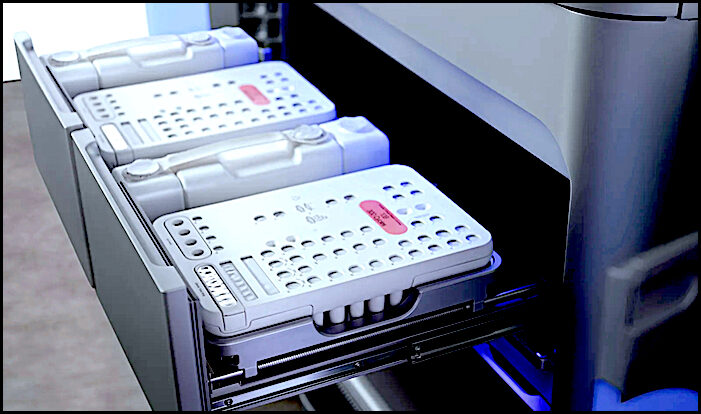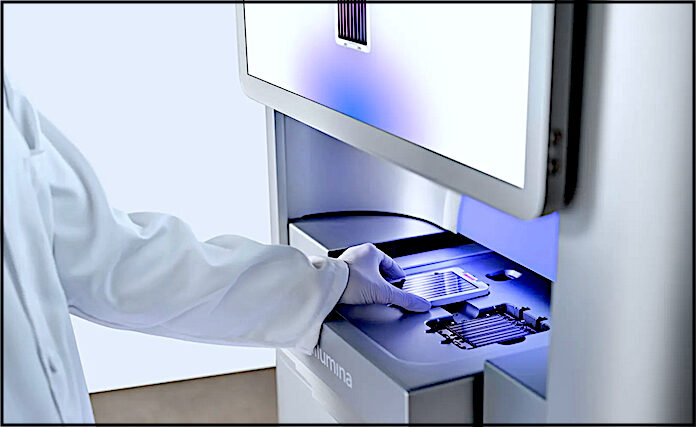
© ILLUMINAReagents and buffer cartridges
Illumina just announced a machine that can crack genomes twice as fast as its current version — and drive the cost down to $200 a pop.
THE HUMAN GENOME is made of more than 6 billion letters, and each person has a unique configuration of As, Cs, Gs, and Ts — the molecular building blocks that make up DNA. Determining the sequence of all those letters used to take vast amounts of money, time, and effort.
The Human Genome Project took 13 years and thousands of researchers. The final cost: $2.7 billion. [...]
Sequencing has led to
genetically targeted drugs, blood tests that can
detect cancer early, and diagnoses for
people with rare diseases who have long sought answers. [...] Currently, the test is mostly limited to people with certain cancers or undiagnosed illnesses — although in two recent studies, around
12 to
15 percent of healthy people whose genomes were sequenced ended up having a genetic variation that showed they had an elevated risk of a treatable or preventable disease, indicating that
sequencing may provide an early warning. [...]
There are a number of ways that researchers will be able to apply added sequencing power. One is to increase the diversity [and] boost the size of genetic datasets. [...]

© ILLUMINAA lab technician loads a flow cell onto Illumina's sequencer.
This process first requires that DNA strands, which are usually in double-helix form, be split into single strands. The DNA is then broken into short fragments that are spread onto a flow cell — a glass surface about the size of a smartphone. When a flow cell is loaded into the sequencer, the machine attaches color-coded fluorescent tags to each base: A, C, G, and T. For instance, blue might correspond to the letter A. Each of the DNA fragments gets copied one base at a time, and a matching strand of DNA is gradually made, or synthesized. A laser scans the bases one by one while a camera records the color coding for each letter. The process is repeated until every fragment is sequenced.
For its latest machines, Illumina invented denser flow cells to increase data yield and new chemical reagents, which enable faster reads of bases. The molecules in that sequencing chemistry are much stronger. They can resist heat, they can resist water, and because they're so much tougher, we can subject them to more laser power and can scan them faster.
Ask questions. If there is a gene or genes that lead to spiritual seeking and belief in God, could that be altered or deleted? If there is a gene or genes that lead to people being compliant or sheep, could it be promoted? If you were a globalist psychopath, who wants absolute control and depopulation of humanity, what gene would you pick to change?